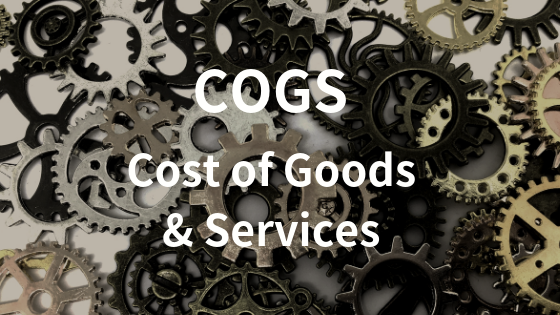COGS: What it is and How it Works

Small and medium-sized enterprises (SMEs) are always on the lookout for ways to maximize profits. The cost of goods sold (COGS) is a great place to start, as this figure includes a key expense: the cost of labor. If you’re manufacturing your products, in addition to selling them, your COGS impacts your financial health.
Knowing your COGS helps you find inefficiencies throughout different parts of your business. Perhaps you’re paying too much for manufacturing and could find alternative means of making your products. Or maybe your labor costs are too high and there are ways for you to make your workforce leaner.
All of these common COGS factors have a huge impact on the way you do business, especially with regard to cash flow. Since cash flow is the backbone of your day-to-day operations, you’re going to want to make sure you can stretch your liquid assets as far as they’ll go. Maximizing your COGS helps improve your cash flow, risk profile and ability to secure business financing whenever you need.
What is COGS and why is it important?
COGS is, at its core, a measurement of how much it costs for you to make your product or provide a service. This figure goes beyond simply tracking how much you spend on raw materials since that only tells one part of the story. Instead, COGS tracks the cost of materials as well as the labor associated with production. It measures any direct costs in materials, purchases and labor that went into creating a product or service during a specific period.
Your COGS is important for three major reasons: tax reporting, growth opportunities and, profit tracking. COGS helps you accurately track your sales when tax time comes, which helps make sure you claim the most deductions and pay the right amount of tax.
This number also helps you determine which items sell better than others and where you might be able to reduce manufacturing costs. (If they’re out of sync with other products.) Lastly, COGS helps you track profits by giving you a foundational understanding of how much it costs to produce your goods.
How to calculate your COGS
Avery’s Amulets is a little shop on Main Street that’s devoted to all things baubles. She has more than $3,000 worth of jewels in inventory at the beginning of the year. She also makes an additional $1,500 worth of goods throughout the year. That means that Avery has $4,500 worth of stock. Avery’s Amulets amasses an astounding amount of sales that leaves her with only $430 worth of inventory by the end of the year.
Avery adds it all up with the following formula:
Beginning Inventory ($3,000) + Additional Inventory ($1,500) – Ending Inventory ($430) = COGS ($4,030)
Therefore, Avery’s COGS for the year is $4,030. This means, in the next year, she knows that it will take a minimum of $4,030 to produce the same amount of goods. Unless she’s able to find efficiencies or there’s a rise in the cost of materials or labor that’s simply beyond her control.
How to control your COGS
Avery wants to bring her COGS to heel — namely, she wants to reduce her labor costs per item. This would help dig her out of a cash flow issue since the bauble business requires a ton of up-front payment for raw materials.
Avery might be able to find savings by automating some of her work, so she buys the Recom-bauble-lator 3000, which lets her build baubles in a fraction of the time. This helps her reduce labor costs, since she no longer needs to employ part-time employees to help her out.
This is only one way to control COGS. The other is buying materials at a better price. Avery doesn’t want to make the investment in a Recom-bauble-ator 3000 and would rather be loyal to her employees. Preferring a human touch, she works out new terms with her gold supplier, which gives her better bulk pricing to produce a bevy of baubles for less money. This helps her reduce her COGS by lowering materials cost.
Why controlling COGS is key to cash flow
Buying equipment and paying to put it together isn’t cheap. Any time you pay more than you need to when creating inventory, you leave money on the table. Keeping track of COGS can help significantly here. It provides you with clues on where you can minimize costs and optimize your company’s operations.
Keeping costs down helps free up cash. Which, in turn, helps you keep your cash flow steady. The more you can free up cash, the better your cash flow gets. Having your COGS at the ready helps you determine where your company is making the most of its available cash, and where there might be a drain on resources.
To get a further handle on your business and its financial health, you can connect your QuickBooks Online account to Forwardly to get a detailed assessment of how banks, online lenders and other businesses view your business in terms of risk. Cash flow is definitely one factor, but our tool also combs through your transactional data to give you a near-real-time answer to the question, “How do lenders view my business?”
| Having trouble with managing cash flow? Forwardly is the one-stop cash flow management platform designed for small businesses, so you can improve your cash flow with ease and bring certainty to the business’s future. Sign up now for free. |
This article is informational only. It is not financial advice. It does not replace the expertise that comes from working with an accountant, bookkeeper or financial professional.
Image: GraphicStock.


